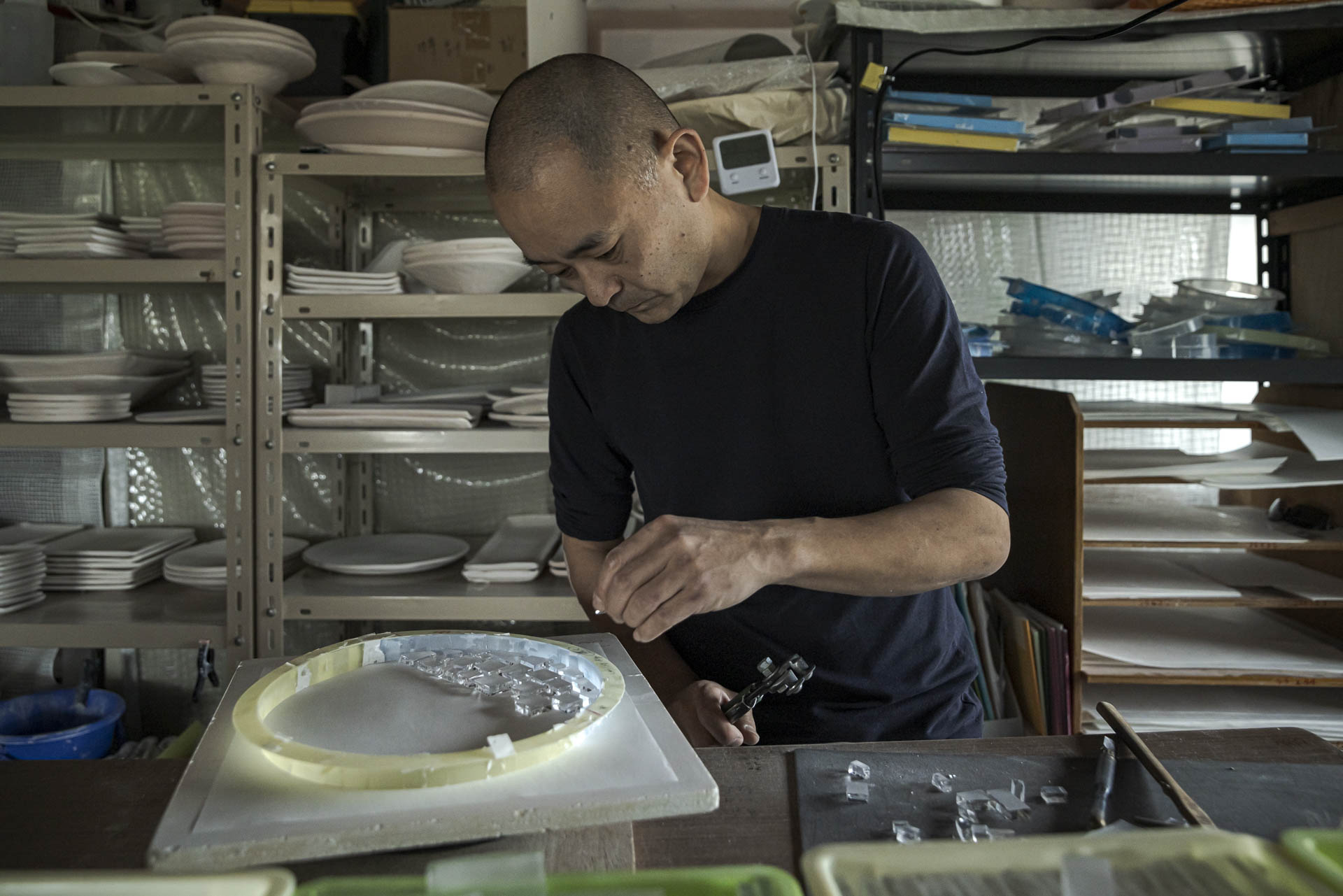
Saburo

About Saburo
Saburo lived in Germany for about three years when he was in his twenties. After returning to Japan, he decided to make a living as an artist, and in search of new possibilities for expression through glass, he began learning from scratch at the Toyama Glass Art Institute.
"I was born near Lake Biwa, but I didn't go to Germany for any particular reason. It all started when a neighbouring lady invited me to come, saying she had connections in England or Germany (laughs). I first lived in Heidelberg, known as the warmest city in Germany. I then moved to Rüdesheim am Rhein, famous for its wine-making, and sold wine on boats heading to the Lorelei. Around that time, I decided to do some sightseeing in Germany, and visited the Kaiser Wilhelm Memorial Church in Berlin. I was captivated by the beauty of the deep blue stained glass there, and after returning to Japan, I began studying to be a glass artist."

About Takashima City, Shiga Prefecture
Saburo has a studio and glass class on the shores of Lake Biwa in Shiga Prefecture, which boasts the largest area and water storage capacity in Japan. Lake Biwa is one of the ancient lakes that was formed over 400 years ago, and is also known as the "water bottle of Kinki" for its abundant water, and has been used as an important water resource from Kyoto to Osaka. Takashima City, home to the Azumi River and Shirahige Shrine, which has been selected as a Japanese Cultural Heritage, produces about one third of the water that flows into Lake Biwa. While Lake Hamana, which is far from the capital of Kyoto, is called Totomi, Lake Biwa is called "Chikatsu Ahumi," and people in the past have known it as "Afumi." It has a history as a port town and post town where many people and goods passed through, with the main routes being Nishi Omiji, which runs through the foothills of Mt. Hiei and Mt. Hira, and Wakasa Kaido, also known as the "Mackerel Highway." It is one of Japan's most scenic spots, which has fostered a rich culture as a scenic location, including the "Eight Views of Omi," which became known nationwide as a literary motif and a subject for ukiyo-e.

Kiln work and hot work
Saburo's main technique is called "kiln work." It involves firing glass in an electric kiln. First, a flat glass panel with a design or pattern is shaped, and then it is fired again to fit into the shape of a plate or vessel. It is a time-consuming technique, but its advantage is that it allows for both precise expression as a painting-like surface and reproducibility and beauty of form as a three-dimensional object.
Recently, he has been trying his hand at tall works of art using hotwork (glassblowing). This technique involves rotating and shaping shapes that naturally emerge due to gravity, and it has become possible to freely create vases, glasses, and other items in addition to shaping them using molds. Although this has broadened his range of expression, he is brimming with new creative enthusiasm, saying, "It's like a sport, and requires daily practice and discipline. It's tough to take on new challenges when you're older (laughs)."

From Saburo
When I started making glassware, I only made black and white vessels. However, a senior glass maker told me, "If you learn about various colors before you start making your black and white works, they will change!" So I set off on a journey to find colors. The art of glass originated with the "Studio Glass" movement that was born in the 1960s. Therefore, I think that there is still a lot of potential hidden in the fact that the techniques and materials are still immature. Furthermore, the hardness of glass changes depending on the temperature. There are various techniques, and various expressions have been created. There is no other material that has such a rich variety of expressions, such as "transparent/opaque," "cold/warm," and "hard/soft." I am attracted to the wide variety of glass. I think that my works, which have not yet returned to black and white, are still on a journey. I will continue to create my works while paying attention to the compatibility with food and focusing on the techniques, so I would like people to use them as much as possible, rather than just display them. And I would be happy if I could make "meal time" a little more enjoyable. /saburo





